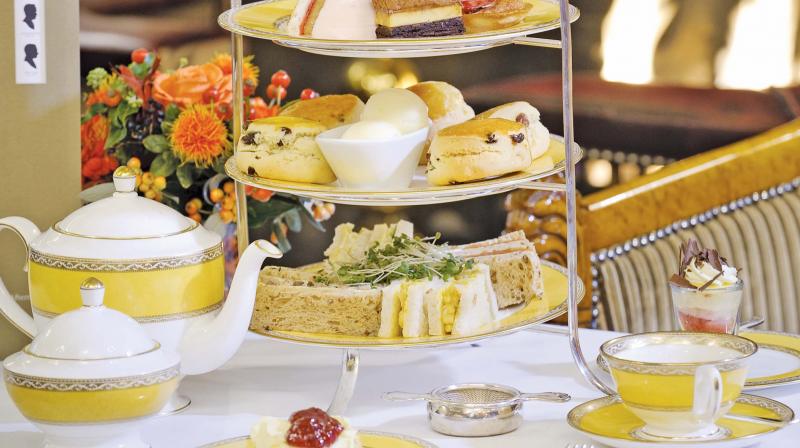Milking the tea for all it's worth
Hands up those who have heard of the YouGov Omnibus survey.

Hands up those who have heard of the YouGov Omnibus survey. I don’t see too many raised hands, which is hardly surprising. So I went ahead and did what any enterprising person would do when he is stumped for something. Knock on the doors of the all-knowing Google. Seek and ye shall find. YouGov Omnibus is a UK based research and analytics organisation that ferrets around and produces invaluable findings on what people are eating, their political affiliations, brand perceptions, sexual predilections, the state of music downloads and even such arcane things like whether Britons like their tea after pouring the milk into the cup first, or post the liquor. This last mentioned nugget of priceless insight recently appeared in some of our newspapers, and is the primary fillip for this piece.
So there we have it. The burning question that has been troubling British citizens for donkey's years has been finally settled. As many as 79% of the survey sample were of the opinion that milk should be added last, while the remaining 21% preferred to pour the milk in first, followed by the dark brew. The split was even more marked across the generations, with 96% of 18-24 year-olds believing that it (presumably milk) should be added first compared to 32% of over 65 year-olds. We can all sleep better for knowing this.
In India, I have never known anyone start with milk followed by tea, the reverse is the norm. Unless you happen to be a true blue, brown sahib. Blue and brown? Well! For those of us of more humble station, the cup of tea comes readymade. If we don't want sugar we raise the red flag when placing the order. So all this brouhaha about milk first or tea first is just a storm in a teacup. Then again, what do we Philistines know? To the Brits, tea is addictively consumed all through the day, a Pavlovian condition. ‘Feeling a bit peaky, dear? Not to worry. I'll put the kettle on and we'll have a nice cup of tea’. Those words, with minor variants, dominate small talk across the British Isles on a daily basis.
Perhaps YouGov should next look at Japan for ceremonial tea drinking, and they might come up with something far more exotic. Like the precise kneeling position while reverentially raising the cup with both hands to one’s lips. If a wee drop were to fall to the ground, you should burn with eternal shame, and a beautifully carved scimitar will be offered, the better to commit the ceremonial hara kiri.
The YouGov survey also draws our attention to the fact that in his 1946 essay, A Nice Cup of Tea, George Orwell wrote, inter alia, ‘indeed in every family in Britain there are probably two schools of thought on the subject’. The subject being milk first or tea first. I felt the futuristic and allegorical author of Nineteen Eighty-Four and Animal Farm was indulging in a bit of cautious fence-sitting, but we will let that pass. An interesting aside, presumably gleaned from that Orwellian essay, was that class distinctions and connotations were inherent in the tea drinking ritual.
For example, the British aristocracy loved to show off their expensive china cups by adding boiling water first, a practice that would reputedly shatter cheaper crockery! And if such a misfortune were to occur, the reputation of the host would lie in tatters - like the tea cup! Not that that will drive him to spill his guts, like his Japanese counterpart. The most you will get from an English host when consumed by shame and embarrassment would be a stifled, ‘Oh, I say’.
Thus far we have been discussing tea in terms of one composite entity. And we in India are pretty happy when the waiter turns up, to merely say, ‘One tea please, with plenty of sugar’. To people who truly understand tea, tea is much more than just tea. Why go all the way to Britain to get confused over tea? Here in India, the sophisticated concept of ‘the tea room’ is rapidly gaining ground. Typically this is what happens in one of these fancy tea rooms. You ask for tea, and a large menu is placed in front of you. ‘It’s three in the afternoon. I just want a cup of tea, dinner can wait’, you expostulate. ‘This is the tea menu, Sir’, says the obsequiously genteel waitress with clenched teeth, implicitly chiding you for your ignorance. You then proceed to run your eye over the menu checking out teas galore - White, Black, Green, Oolong, Herbal, Pu-erh, Tisanes, oxidized, non-oxidized, fermented, unfermented, flavoured, unflavoured, myriad infusion variants - and those are just samplers. We are yet to get to Earl Grey, Darjeeling and Camomile. You still have another five pages to go. The prices are all in the high three figures. And that's just the tea alone.
The pastries, biscuits and cookies come extra. I look at the waiter and say, ‘These prices are extortionate’. To which she responds with a non sequitur, ‘We take all credit and debit cards, Sir’. Most fortuitously, my mobile phone goes off just then, a recorded message reminding me that my house insurance premium is overdue. ‘Oh my goodness’, I mock apologise to the waitress, ‘My house is on fire. Sorry, must dash’.
I then walk a few yards to a good old Udupi restaurant, and order ‘One strong tea please, with dollops of sugar’, and it arrives within five minutes in a clean glass tumbler. No teapot and cosy. Accompanied by a plate of crunchy, masala peanuts, which I did not order. ‘Complimentary Saar’, says the estimable waiter, a pencil tucked behind his left ear. I don't believe I have enjoyed a glass of tea more. And the peanuts were scrumptious as well. Tell you what, they can keep their fancy tea rooms. I’ve had it with them.

